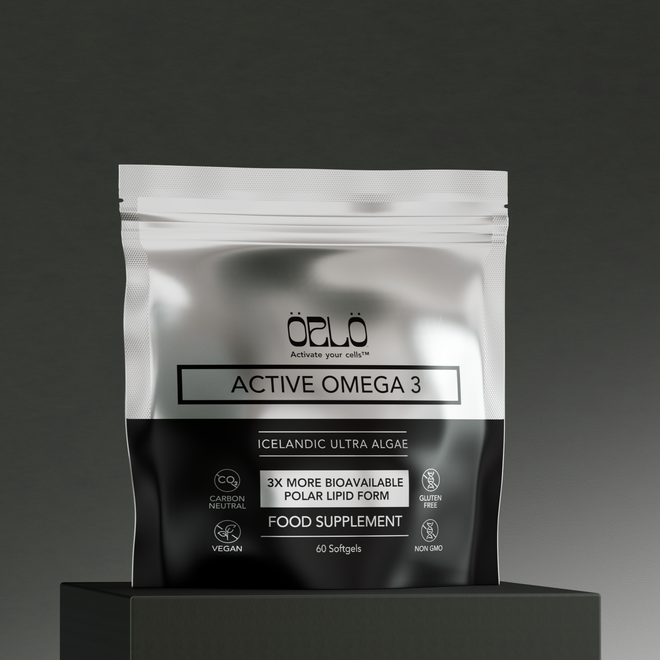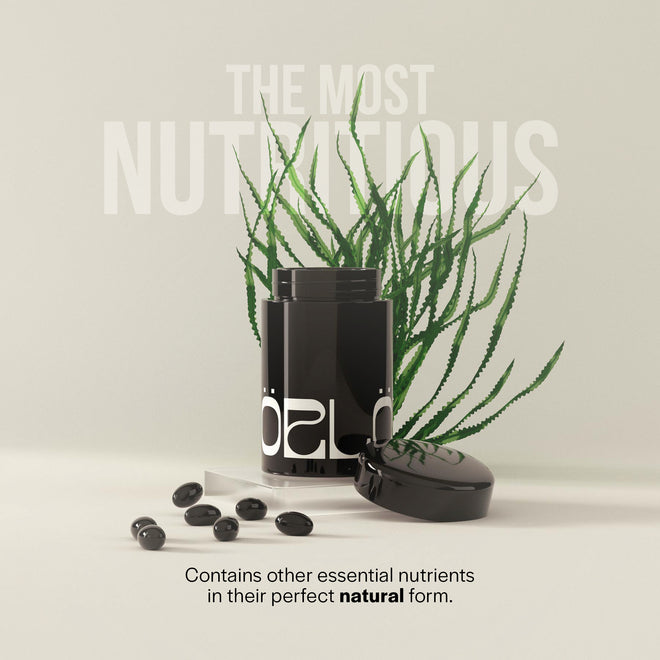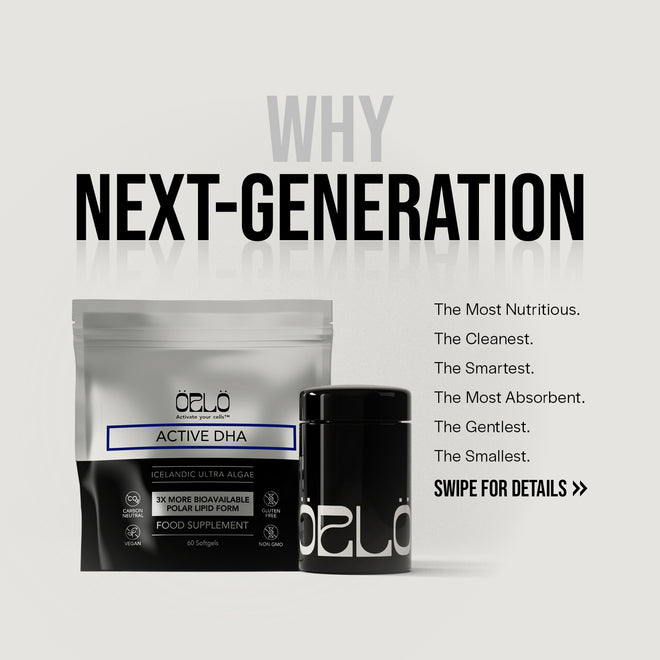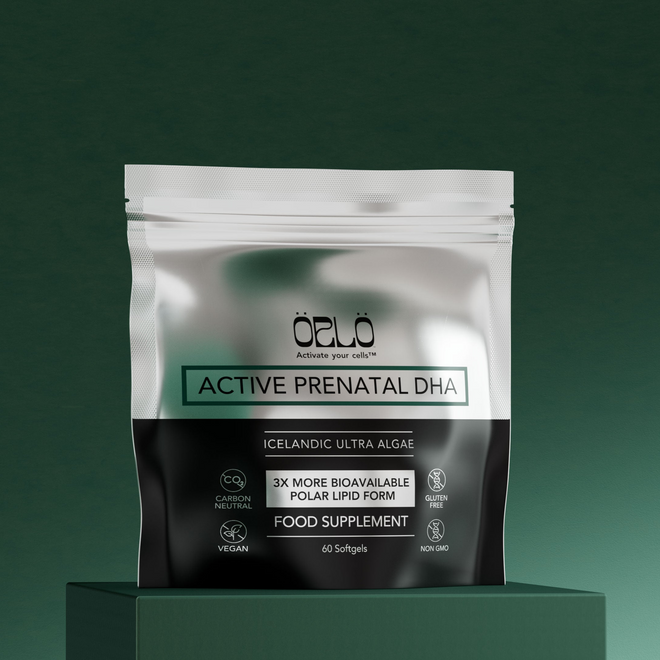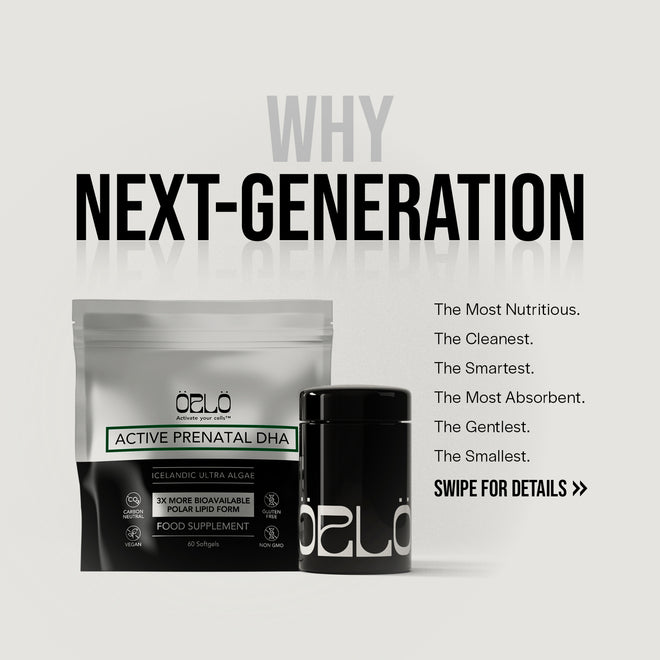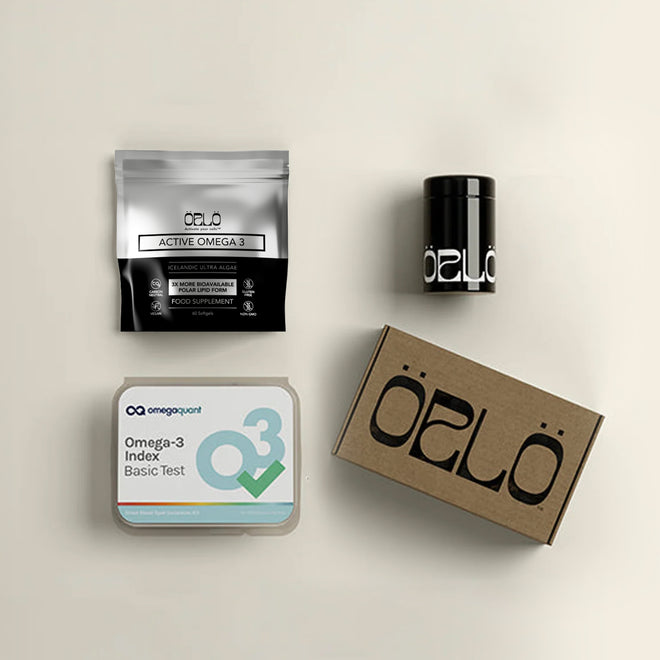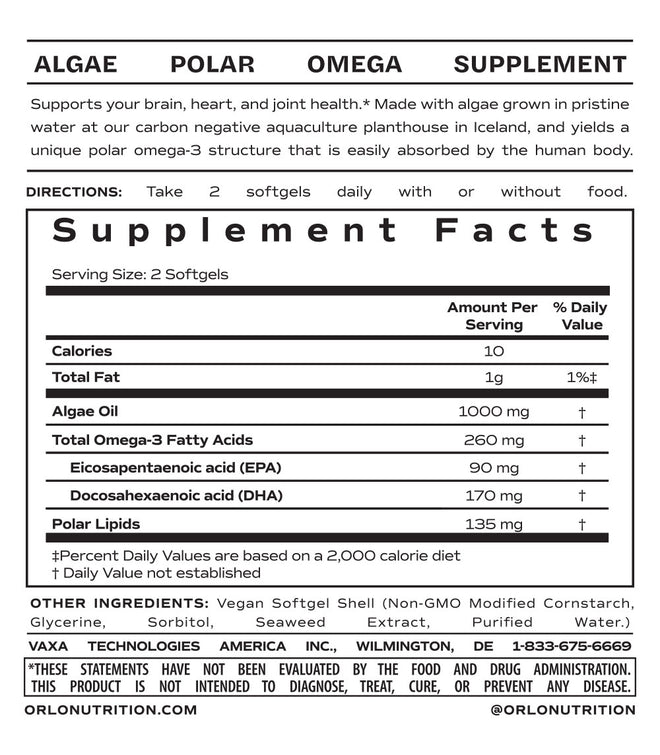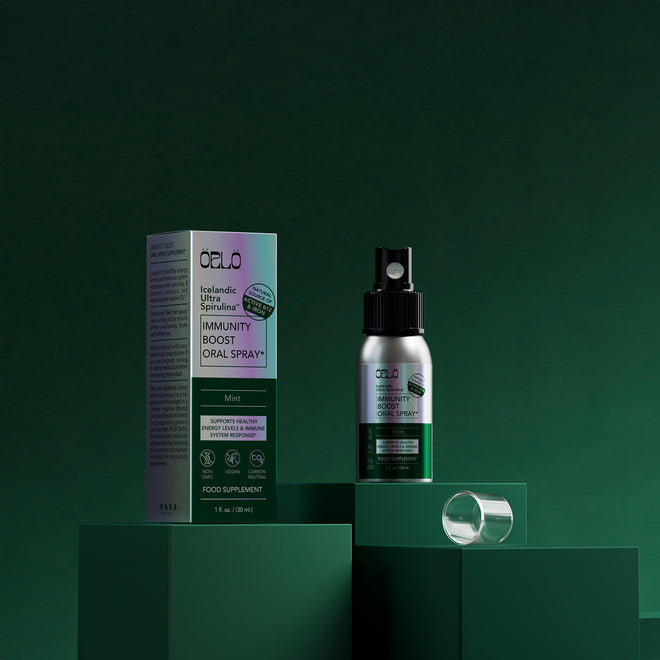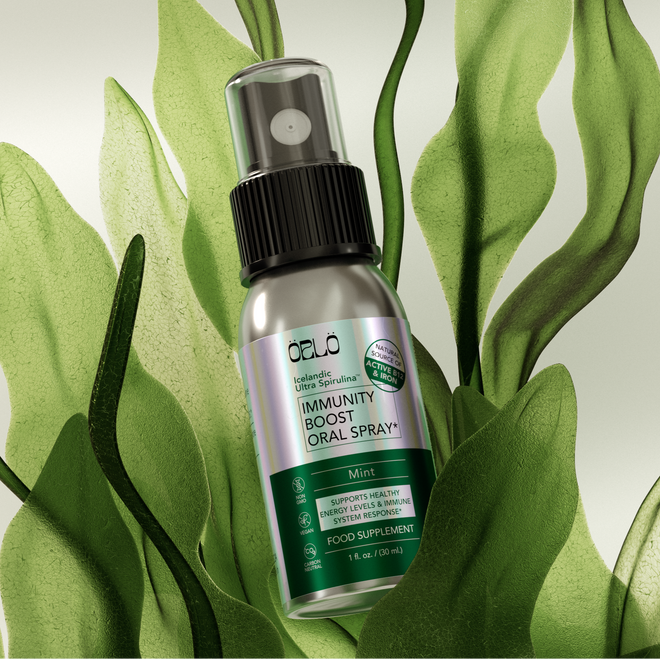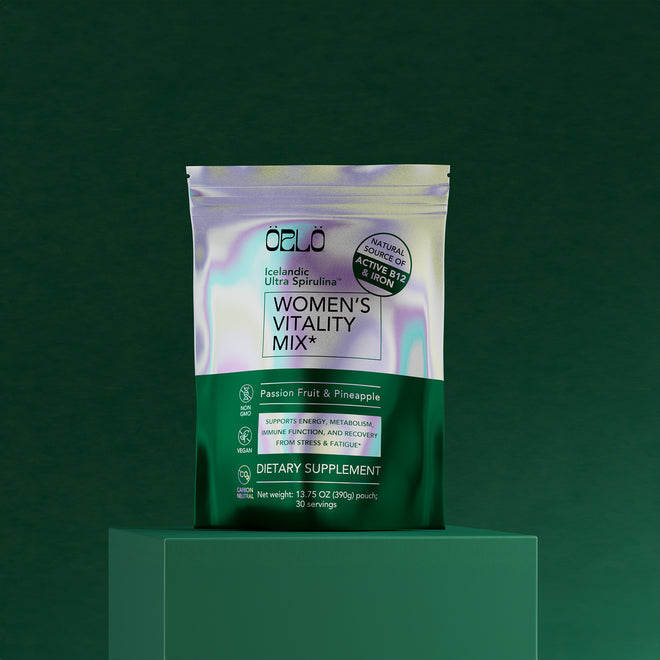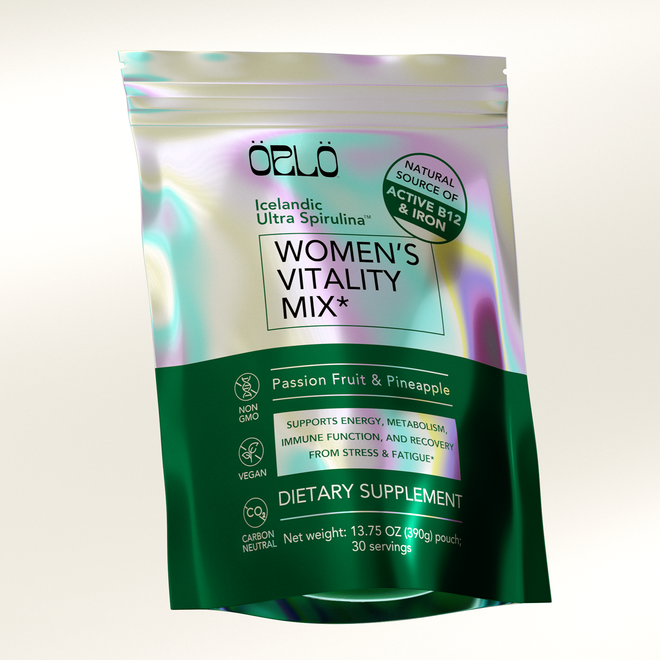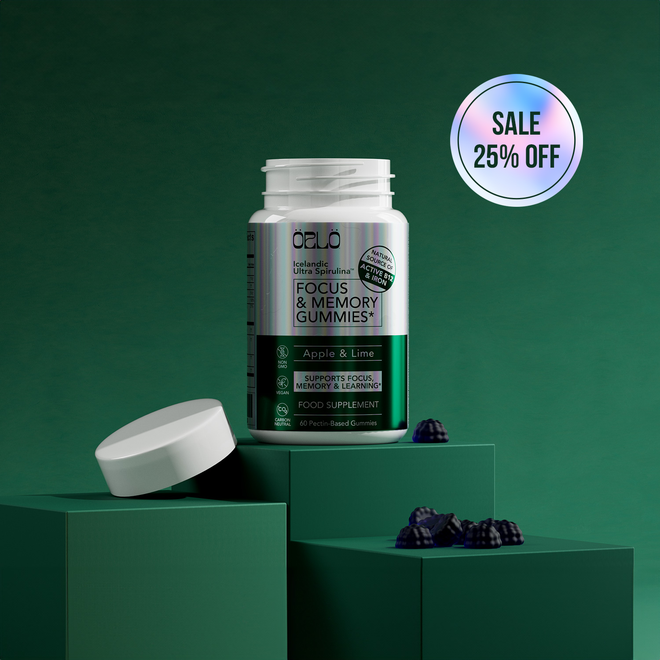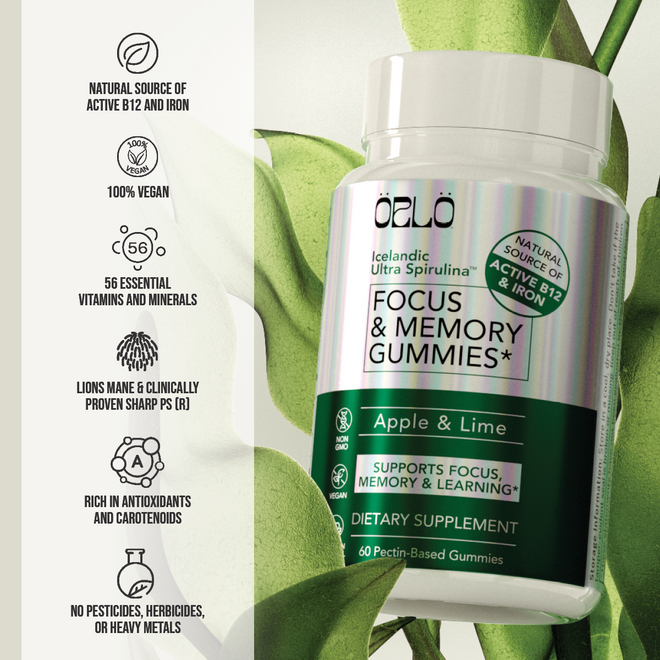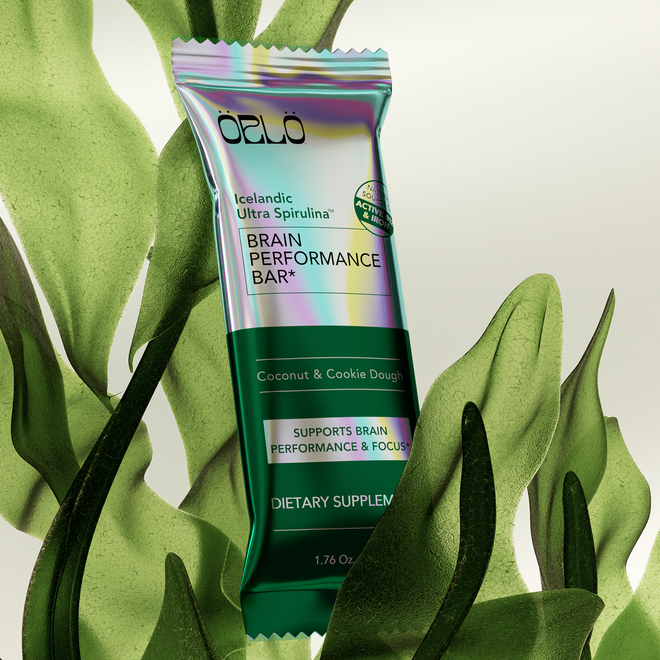25% Off - use code: HOLIDAYS
Replacing Petrochemicals With Carbon-Negative Algae In Wearables & Print with Scott Fulbright, Founder and CEO of Living Ink
Petrochemicals are superfluous in all of our lives. They are not only in the fuel and lubricants used in machinery, they are used to make plastics and clothing, inks and paints, and so much more. To dive into this topic, Corinna Bellizzi and Tia Walden are joined by Scott Fulbright, CEO and founder of Living Ink, a company that seeks to replace petrochemical-based inks with inks from algae.
Topics discussed with time stamps:
- 00:00 Introduction - Why are we talking about inks on a nutrition podcast?
- 08:40 Why should you avoid "carbon black" ink from petroleum sources? It's on the list of pollutants listed as cancer causing in California's Proposition 65
- 10:25 The carbon cost of extracting and refining oil for carbon black ink (the PAH problem) vs. the renewable resource of algae
- 14:50 Did you know that we interact with ~80,000 chemicals, most of which haven't been tested for their safety?
- 17:45 Algae biomass as an exponential solution, because it grows constantly and can be harvested daily
- 19:30 Innovations in fashion using algae ink (including Vollebak's black heather shirts, tinted with algae ink)
- 24:00 Challenges of innovation from the material science perspective
- 25:00 Corinna's experience with an organic cotton T-shirt printed with Living Ink at Farm Fresh Clothing Co.
- 27:15 What algae species has Scott Fulbright eaten?
- 28:45 Why algae over petroleum? It can feed us. It's carbon-negative, and it even provides over half of the oxygen we breathe.
- 29:53 Other innovations coming out of algae: alginate fibers for apparel, foam, notPLA plastic replacement, footwear, algae paper, bioplastics, and even the soft gel material in Örlö Nutrition products
- 33:30 Shifting our mindset to ensure businesses are regenerative, and that our nutrition sources are as well
- 34:50 The importance of remaining curious, inspiring innovation, and a greener tomorrow
---
Replacing Petrochemicals With Carbon-Negative Algae In Wearables & Print with Scott Fulbright, Founder and CEO of Living Ink
Corinna Bellizzi: Welcome to nutrition without compromise. I'm Corinna Bellizzi, and I’m joined by my collaborator, Tia Walden. Today we are thrilled to introduce you to one of my favorite researchers in the world of algae. And that's Dr. Scott Fulbright. Scott has spent his career developing novel products and processes at startups in the world of biotechnology.
He has spent the last 13 years in the algal bi-products industry, bringing ethereal research and innovation of scientists to the marketplace. He was a national science foundation scholar who developed methods to reduce the cost of algae production, so it could become commercially viable. Now having founded Living Ink, Scott focuses on strategic planning and collaborating with big brands, including Patagonia and Adidas to incorporate algae inks into packaging, screen printing products, and even close.
Tia Walden: So, if this is a nutrition show. Why are we talking to someone who makes ink from algae?
Corinna Bellizzi: Well, let's put it this way. What you put on your body is as important as what goes into your body. Your skin is your largest organ, and we're all going to learn today about how almost every printed and durable item in your home includes petrochemicals from the toner in your Printer cartridge to the iPhone case in your pocket to the headphones that I'm using right now to the clothing that you wear. And Scott is one of those committed few that's working to solve real problems that affect our health with algae and this case, the waste stream of algae grown for human and animal nutrition.
Tia Walden: And can I just say it? Algae is so freaking cool.
Corinna Bellizzi: Yeah, you can say it.
Tia Walden: So on that note, let's get to know Scott and better understand how the planets first plant can even become ink that we use on paper textiles and more Scott, welcome to the show.

Scott Fulbright, founder and CEO of Living Ink Technologies.
Scott Fulbright: Thanks for having me. Appreciate it.
Corinna Bellizzi: Well, it's so good to have you here.
I'm loving the chance to interface with you again. We met years ago at a conference. I think it was either supply side or an algae conference. Cause I was going to so many at that time. It's really hard to know. But, I mean, you've just come quite a long way and a relatively short time. So I'd love for you to just first start by telling us the story.
How did this come to be?
Scott Fulbright: Yeah. So, just background on me, I, you know, I, I've always been one of those people that I want to pursue my passions and kind of the things that I really enjoy. And that happened to be Marine biology, whether it was a lake or a river or ocean, I was just always attracted to Marine biology.
I ended up getting a position studying algae, and what we were studying was why algae was causing these big blooms and actually creating havoc on the ecosystem. And so, by studying algae and realizing how fast it could grow, you know, it kind of jumped to my mind, you know, why don't. This material for things that can benefit society and use algae for what it's good at, which is growing really fast.
So I worked at a couple of biofuels companies, so turning algae into actual oils and fuels that can run motors. I worked at a couple of other companies doing nutraceuticals. I got my PhD in molecular biology, but I was studying algae the whole time. And then one day, you know, shopping in the grocery store and I just had one of those aha moments, random.
Where I looked around and I just saw everything was colored in ink and coded in, in codings. And, you know, it just jumped in my head, like, what is ink? And what does that color? I went home and I did some research and just realized, you know, all of those pigments and ink was just dry from petroleum. And so I kind of combined that aha moment with study analogy and said, well, algae come in different colors and they're really small and they're, they're beautiful.
And so combine the two and then, you know, here we are, six years later making real product in the real world.
Tia Walden: I think that's amazing. And I saw your Ted talk from a few years back, and I love that you, you say that you really have the curiosity of a two year old. And honestly, when I listened to your Ted talk and I learned about the petroleum and the ink and all of the stuff that honestly just never crossed my mind.
I didn't put a second thought into the ink coming out of my pen on paper. I didn't put second thought into the ink. I was buying for my home printer beyond, I don't want to spend an arm and a leg on it because that's kind of, all we really hear about is the cost of ink. We don't hear about what truly is this ink, because you do start writing with a pen and paper and you look at your hand, you're like, wow, that ink is covered on my hand.
I can see it smearing on my hand, all over the paper. And so I love that you incorporate that into your business, that curiosity, and really spark that in other people. So I know that you mentioned a little bit, you were in the card aisle. Can you go into detail of where it sparked or where the business started off with those cards?
Because I thought that was the coolest story ever.
Scott Fulbright: Yeah. Yeah. You know, you always have to start somewhere. And the original product that we made at Living Ink was an ink that actually was alive and would grow. So I could write a message on a card using a pen, and we even had it in a digital printer.
At one point I could send it to you and it might say happy birthday. And then you put it in either Lamplighter, sunlight, and over days the message would start to grow. And it could say, you know, happy birthday from Scott on day two, and then a cake would show up with candles on day four. So it was basically like gardening, but on a little tiny piece of paper and you're using little tiny algae cells.
Right, right. Big, you know, potato or corn plants. So we call it like micro gardening, but you could kind of communicate. So that's how we started. And we started doing different colors of allergy with that product, and it was really fun, but, uh, you know, one of the things as we were putting together, those, those products, you know, it really, I've just been driven at like that sustainability and trying to make an impact and scale it.
So. That was the most fun product we have ever made. And you know, now we're really a scaling needs more of like traditional links, which are still cool, but boring compared to the growing ink.
Corinna Bellizzi: Well, boring perhaps to some. But if we think about the fact that this black ink that you've been able to create is in everything from the paint on my shore microphone here to the headphones I'm wearing, you're wearing the eyeglasses you're wearing. I mean, it's touching our skin so much of the time. And so as our body, you know, our skin is our largest organ. We absorb nutrients through our skin. We absorb pollutants through our skin, people who are sensitive to things like chlorine often have to put dechlorination filters in their home just to be able to take a shower. And so I was hoping you could even speak for a minute about that kind of technical aspect of working with algae, as opposed to petrochemicals for exposure to common pollutants that might actually impact our health.

A tin of Living Ink, the algae-based alternative to petrochemical-based carbon black ink.
Scott Fulbright: What I was learning as I was going through this, this process and, you know, uh, you know, just, just before I start there, you know, I typically talk about this story because I was in graduate school and.
Whatever kind of realizes that it wasn't, that I was in graduate school studying anything specific as much as I had the time to really think about the world around me. So when I had that moment in the grocery store, it was that aha moment of like, what's my pen made out of what's my toothbrush made out of, and I, you know, just like any person could and you start to research.
Well, what's, where's, where's my plastic toothbrush come from. And then you realize it's petroleum and then you go, well, where where's my headphone plastic. Well, it's petroleum. And so then that was just that curiosity and that kind of thinking like a two year old is like, it wasn't cause I was in grad school.
So I was taking the time to actually look around and think, you know, what, what are all these things? You're exactly right. When we started talking about replacing carbon black from algae, instead of kind of oil or petroleum it's in everything, my headphones, my iPhone case, it touches everything.
You know, one of the things with carbon black that's made from oil is there's things called polycyclic aromatic hydrocarbon. So the acronym is PAH’s is so they're cancer causing, and that's why carbon black is on prop 65 in California is potentially cancer causing and it's in my computer monitor it's in everything.
And so that's just one example. When you start looking about yellow inks there's there's PCBs, which are known to kill off salmon in the north. They get into fish, we eat the fish and now you've got PCBs in your body because of literally the yellow paint that's on the road that we put on the road. So it's one of those things that you can go on and on and on just saying all of these different things that we use every day, you have to really look and say, well, what is that?
How do you manufacture it? And is it safe? And unfortunately, there's a lot of things that we should question and be skeptical about.
Tia Walden: Right. And I don't think that. For me personally, even just now that you say that, like, if we think about all the stuff that we use as black and not only does it touch our hands and our skin, but like you're right.
My toothbrush is black. And like you put that in your mouth at least twice a day. And it's just things like that that never really crossed your mind. And beyond our personal health, can you kind of go into why we should be concerned about the ink that is made from petroleum for the planet till.
Scott Fulbright: Yeah. The biggest thing is, you know, you have to kind of look at the entire way something's made, right?
So all the way from the starting materials. So I had this moment, the other day, where I was thinking about that major oil spill in the Gulf. Like we just kind of forget about that because we move on and you go, wait a minute. That was terrible, you know? And I'm sure there's still things that are not the same, um, from before when that happened.

Tetraselmis, a microalgae strain.
You know, that's the raw material that we're using for everything from the black pigment, that's in our plastics and inks all the way through the toothbrush that we use in terms of that plastic. So that's the raw material. So there's environmental issues of extracting that material. So large carbon footprint to pull oil, from thousands of feet underground.
And then to kind of refine that into the products that we, that we use is quite toxic with large carbon footprints. And so I think that you have to kind of. From the beginning all the way to the end. And you know, like I mentioned with the, uh, the PAH is in carbon black, like that's just part of the production of, of traditional carbon black is that you have these cancer-causing molecules that are associated with that material.
And so in the end, it's, it's, it's pretty, it's pretty nasty stuff I would say. And I didn't really answer Corinna's algae question, but. Allergies like a plant, right? It's it's, it's quite natural. Fish are supposed to eat it. We're supposed to eat it. It's within the ecosystem. So we're using material like allergy.
That's kind of built in to be in this ecosystem, you know, petroleum that's been, you know, that's taken hundreds of millions of years to produce that. We extract that isn't really part of the ecosystem. It's kind of satanic ground. So that's kinda my, my take, at least on the th the bio is the other thing I want to say is that even before I was really fully interested in climate change, Petroleum or oil, like there's gotta be alternative.
So we'll talk about safety and that's great. But at some point, like we run out, we need renewables, we need alternatives to how we produce things. And that's the easiest argument when it comes to like, why should we be doing bio-based things, renewable things.
Corinna Bellizzi: I'm right there with you, Scott. Now, one of the things that I've heard as an argument from people who are like, it's not such a big deal petrochemicals. Weren't they once also algae, because such a large portion of petrochemicals is decomposed plant matter. And so I think that their understanding of how that could be different or that, that is different from something that is renewably grown. Like algae, there's a, there's a miss in the understanding. Why would the algae that we see, we use a waste stream from, to make into a carbon black ink? How is that actually different than taking something like oil, which perhaps used to be plant matter and making an ink from that?
Scott Fulbright: I can see the thought process there, but I think that it's, there's, there's a lot going on over hundreds of millions of years in terms of the chemical processes there in terms of the refinement of the product.
And you know, when you look at carbon black, which is the black pigment made from petroleum. That's what makes your tire black, for example, that's basically burning petroleum. So the way I think of it as like a factory that basically has a, a feedstock or an input of oil or petroleum, and it's just basically an incomplete burning of that material. So when you do a process like that, that's how you get these PAHs associated with that material. You're also releasing a bunch of carbon dioxide and other contaminants in that exhaust that you're producing when you manufacture that. So yeah, I would say there's differences in the manufacturing of things.
And I also say that. Petroleum used to be allergy, but it's gone through a lot of changes since then. And it's not really the same as what we do, essentially. Some of the pigments that we use that are non-black, but, but colorful are actually nutrients. Right? So when you think of a yellow pigment in an algae cell or a green pigment in algae, so that's just lutein or chlorophyll.
So if you actually ate some of the pigments that we produce in the color side, you're actually, you know, you'd be ingesting nutrients, letting that. Definitely not toxins.
Tia Walden: I think that's really cool to think about. And also recognizing that even when we don't consciously think that we're ingesting something like ink or, you know, different things like that, we really are.
So having that be a nutrient base is amazing. Like why not have that kind of a backup knowing that those products are going into our skin or those products are going into our mouth directly? Not only that, but I was just thinking of. When you are feeding, especially little kids like baby spoons and baby Tupperware stuff is always made in just this bright, colorful plastics.
It's eye appealing to our children. And now we're shoving that into our child's mouth.

Plastics are ubiquitous in our lives, from the plastic spoons we use to feed our babies to the clothing we wear. Change is coming, but we must push for it. Photo by hui sang on Unsplash
Scott Fulbright: Yeah. Yeah. Well, and then, yeah, no, definitely agree on that with the babies. I mean, that's where the, the, the, the moment it comes off, like this is serious, you know, I didn't really quite answer the question with skin contact.
Know, I think there's about 80,000 chemicals that we interact with in this world that are commercially viable. Very few of those have actually gone through scrutiny of testing for safety. And so even when you buy a, let's say a new couch, you sit on that new couch and you go, oh, this smells like a new couch.
That smell are physical molecules that are going into your nose, that you're smelling. Like those are, those are things like fire retardants, right? Those are terrible things. And so, you know, I've been at a few conferences with chemistry experts that talk about these kinds of consumer products. And it's scary.
I'll be texting my wife as I'm in the conference. Don’t use plastic baby bottles, and get rid of these things. And, you know, it's, it's just really unfortunate in terms of some of the chemicals that we're putting on everything. And in some cases completely unnecessary, like for fire retardants, on clothes like, there's just a case to be made that it's doing much more harm than good in terms of it being on our skin.
I was just doing a little bit of research earlier this week and learning that even like tattoo ink has chromium and chromium metal is associated with the pigment. It can be considered, you know, probably cancer causing, right. So you just start looking at all these different colors of materials and it's just, it's, it's definitely alarming and it can go on and on.
And it's kind of a rabbit hole of like, well, what's this made out of, and sometimes you don't even want to know.
Corinna Bellizzi: Well, none of us can really be bubble babies. Right? So that's a bit of the problem is we're already living in the world. We're already exposed to all sorts of chemicals. And so if there's any specific spot that we can help to minimize that we'll all be better off, right?
And so I think that's the goal and it helps me to just come into this world of algae with excitement, because the reality is you've got something. Has an exponential growth pattern, right? Like one cell divides into two in the world of micro-algae and then that second cell divides into two. And so now you've got four and it just keeps going, going, going the growth rate of algae alone.
As you demonstrated through the greeting card idea. Is incredible. And so let's talk for a moment about what it takes to grow algae in the modern era. Outside of let's say the ponds that are having overgrowth or the ecosystems that are being impacted by those algae blooms.

Example of an algae bloom. Photo by Mihály Köles on Unsplash
Scott Fulbright: Yeah. Yeah. It's a great point. I mean, that exponential growth is quite powerful. An example of this is that, you know, harnessing allergy within these production systems where you're kind of meaning to grow the allergy is, is quite powerful. Right? So when you grow a traditional crop like corn, You might harvest that once a year, twice a year, probably maximum. Uh, when you grow algae, you have billions of cells that are exponentially growing and you're harvesting that algae every single day.
So you have a crop that needs to be harvested every day and you can turn that biomass into all sorts of whether it's supplements or a protein or in our case, even colorings. I mean, there's, there's a lot you can do with that. I mean, that's something that we're really interested in in the algae space is that you have a lot of algae biomass. How do you start to fractionate that, that algae into all sorts of different components that both add value in terms of kind of sustainability, but also kind of, the economics of the business as well.
So yeah, I think you're right. There's the exponential growth is quite powerful when harnessed correctly.
Corinna Bellizzi: Well, if we think about it, you mentioned earlier the yellow paint and the. I'm envisioning a world where that yellow paint could be made from algae, as opposed to from whatever toxic chemicals are actually required to make it.
So that, that runs into our waterways and any byproduct from that is more naturally based and something that's truly regenerative. Or if we look at even the beautiful purple and red pigments that algae can create, I know right now you're focused on black because heck the waste stream of algae. You can create a really solid, beautiful black that's printable on textiles and books.
If you want to, that could be potentially used as printer, ink and printed, and large-scale screen printing even used by some of these big companies today, including Adidas and Patagonia. I even saw recently. That there was a black t-shirt ink company, or they were using algae Inc in their black t-shirts, but the black looks more like charcoal-y. It was a little mixed heather type of look selling for, I think, over a hundred dollars.
So I wondered if you could comment on that if you're involved in the project or not just like what your thoughts are about the world of fashion and using this particular blacking.
Scott Fulbright: Yeah. Yeah. So we are involved in that project that was with a really great brand called, Vollebak, out of Europe. And, they used our black ink and they did some things to give it that gray tone.
So rather than kind of dying a shirt with, again, petroleum based products, they're using, uh, our, our algae based products. So we were a part of that. That was a great project. And in terms of fashion, I think there's a huge opportunity because. People where things for usually hopefully a long time, right? When you, when you print a package, it kind of gets used and hopefully recycled or composted or whatever, but it's, you know, it has a short life, um, ideally a shirt, uh, pants, shoes last, a long time.
And so, uh, I think there's a great opportunity there. I think fashion has been an industry that has wreaked havoc on the environment. In terms of dyes and pigments and water usage. So I think that that industry is looking for alternatives to how things are done right now. And I think designers are both interested in sustainability, um, but also innovation and storytelling.
And that's kind of where we've been able to turn the corner on on some of these projects is, you know, let's tell a story about what we're doing, which is growing the future of materials rather than using petroleum. So, it's been really fun to get into the, uh, you know, we're doing everything from shoes, the pants to underwear, to, um, uh, bags, I mean all over the place.
But again, it just demonstrates when I first started this business, I thought, you know, this is just a little niche, right? Black pigments or pigments in general, it's just this niche little industry. And then you realize these are billion, billion dollar industries between ink and pigments, and then you start to drive around.
And you start to go, oh, there's pigments on every single thing in turning the paint on my house and the paint in my room and my shades here. So yeah, they're not niche industries. These are big industries that need alternatives for the future. You know, I talked a lot about petroleum and its extraction and manufacturing process, but you know, you're exactly right.
Which is, when you think about growing, let's say yellow pigment for the future of road paint. You know, if you happen to have a, a spill of your algae, it can actually be like food for the fish in the river. It's not killing them. Right. And I mean, I think that's the vision that we're all trying to strive for, um, where there's this symbiotic relationship.
And so, yeah, I'm more encouraged right now than I ever have been. And I'm a skeptic by nature, so that's good.
Tia Walden: So I have a question then about that. Cause I know that the fashion industry in general, a lot of the issue, some of the issues are like that fast fashion things are not made with good quality and they ended up being tossed and, or not given away people literally just throw them away.
And so with the algae ink and like how that growth of the algae does that affect like how long the product is going to last, is it going to keep growing once it's printed on that shirt? And like in a while, it's going to look like. Word or different letter or it kind of grow into a smudge. How does that work?
Scott Fulbright: Yeah, there's a lot of ways we can do it. You know, it's almost, uh, overwhelming or, you know, when you're a smaller business, you have to kind of focus. So, you know, right now we're making products that will interact like any other pigment in the world. So. Charcoal colored shirt that Corinna just mentioned, um, that will stay colorful for a long time.
It will not change over time. Um, so someone could wear that for a very long time. If they wanted to know if it biodegrades that pigment is, um, we've done a lot of testing to show that it's safe, that it's kind of a nerd and it's basically. You know, it's a carbon negative pigment, so it'll just sit there in the soil and keep that carbon captured.
And it won't go back to the end of the sphere. So we're doing that right now because we're trying to fit into that industry. And we're trying to say, like, we can make a product that can replace what you're doing, right. Um, we also have some fun projects where we are looking at, you know, using a living allergy that can grow and that can actually stay alive on a, on a substrate or a shoe.
And so those are kind of those fun projects. It's a little bit more pie in the sky of like, how does that look and how does it interact in the world? Um, one of the things I've been amazed at, and I, and I understand why we use some of the materials we use is that when you look at plastics and you look at carbon black, like they're pretty, they're pretty amazing at what they do.
Right. We just don't, we don't like. We don't like the side effects that they have on the world, but in terms of like what they do, it's pretty spectacular in terms of some of the material science that was done. Now it's our job as scientists to go, Hey, we did a little bit too good, a job. They're like, you know, maybe we shouldn't have things last thousands and thousands of years, maybe if you eat a yogurt container, it should be able to go away very quickly and easily.
Right? Yeah. I think a lot of the material scientists that are working on these projects are trying to develop materials that. Last long enough for how long the shorter shoe gets used, but then we'll go away after that time. And it's a fine line, right? Like you make a shoe, that's a hundred percent biodegradable.
Well, you don't want to, you don't want that shoe to biodegrade while you're wearing it in the first year. So you gotta have these levers and material scientists that can help dial in those expectations. So right now we're trying to replace what's out there in the future. There's all sorts of crazy ideas of things, fading and things appearing, you know, using biotechnology.
Corinna Bellizzi: Well, I love that Scott and what I will say to further answer Tia's question. Scott actually referred me to a company in Northern California that makes organic t-shirts and that does screen printing using living inks, algae, the black ink, right. The carbon black. And so I, as a part of that vetting process ordered a shirt from them that was printed in algae.
Örlö Nutrition t-shirts, printed with Living Ink, made from algae, on organic cotton. The shirts are cut, stitched, and printed in California, by Farm Fresh Clothing Co.
And beat it to hell. I put it in the washer like a hundred times. I mean, I'm almost not kidding. That's a bit of an exaggeration, but I was tasked with that, you know, the CEO of Örlö Nutrition, you know, we're like, Hey, let's go ahead and make sure that this is going to work. So washed it, put it in the dryer.
And I have one of those like 1980s, dry. It's not super eco, but the reality is it's still kicking and doing a good job. So just every load of laundry that we had to do for a few weeks with our two young boys at home, it went in the wash, it went in the dryer, the ink stayed. The shirt quality is awesome.
So I'm just saying for people, if you're willing to make a swag item that costs a little bit more money to make, but as truly intentional and more eco-friendly farm-fresh up in Norco. They can print with your algae. They do an exceptional job and we're getting ready to do something like that for the launch of Örlö too, so that we can have an eco minded, white shirt, organic cotton printed with algae ink, and blazing our message of the fact that.
You should be able to get your nutrition without making a compromise.
Scott Fulbright: That's great. I'm glad that the ink lasted that long.
Corinna Bellizzi: It's still looks good. I mean, it honestly looks better than a lot of other screen printed shirts I have that were printed with black. So I think you did an amazing job. That's all. I'm just going to say it.
Scott Fulbright: That’s great to hear. And, you know, I was going to say that, you know, part of the challenge when you are an Adidas or you are these big brands, like there are those expectations and those expectations are hard to meet sometimes for some of these more renewable bio-based products. So that's been one of the big challenges is like, how do you do things differently?
But you fit into the mold enough where it, can get into the supply chain and actually scale to make an impact. And that's been one of our big initiatives that Living Ink. Cause like, we don't want to just do this at a small scale. We want to have that vision to go very big so that there is an impact, um, uh, related to sustainability.
Corinna Bellizzi: Right. Because if it doesn't work, if it isn't durable people, aren't going to stick with the change and you won't have changed the system. Right? So I just think that's important. Now, you touched on a couple of things with regard to algae and how amazing. I had a question for you specifically to nutrition.
What algae have you eaten?

Sushi, rolled with nori (seaweed) and topped with seaweed salad. Photo by Önder Örtel on Unsplash.
Scott Fulbright: Uh, I've had the, uh, I've had some of the supplements, like the omegas from allergy, obviously spirulina is a favorite and oatmeal and smoothies and things like that. I've had haematococcus with astaxanthin before I've even had a danelliella that contains it's like a orange color with like beta carotene.
So, you know, in some ways this can be a nutraceuticals and NRI. Some of these things are like really great pigments that can be used for various things. So yeah, I've, I've had, uh, a wide range of those different, uh, species that I mentioned. And then obviously the thing that people forget about, and I learned this like 10 years ago, is that.
You know, we think of the algae industry as really small or people don't maybe don't know about it, but you know, it's been around like when you eat sushi, like that's that's macroalgae right. So th th there's a, that's a billion dollar market of different types of algae that we don't always think about, but we, you know, might eat on a weekly basis.
Corinna Bellizzi: Yeah, that seaweed salad or the Nori. I mean, all of that is also algae and the more macro variant they grow like seaweeds or the giant kelp that surround the Monterey bay where I am, and they create a beautiful majestic environments for an entire ecosystem of plant and animal life. It's kind of amazing. So yeah, the world's first plant, it's still kicking strong, right?
Scott Fulbright: But, you know, I think the other thing related to algae is that it, you know, it produces about half the oxygen that we breathe. Right. So, you know, uh, Corinna, you ask about, you know, why algae over petroleum, you know, petroleum, you're creating a bunch of carbon dioxide and other toxins in the air. In algae, you're basically creating oxygen for us to breathe. Right? So whenever you take a breath of oxygen, About half of that oxygen is coming from the ocean from algae, which, you know, every day or every breath you take, you know, we're connected to algae and we don't even realize it. So, you know, it starts to, you start to realize how small the earth really is and how all these things are connected. Like algae and our breathing.
Tia Walden: I love that. And I think that, I mean, you've expanded my mind just to think of differences in when I'm going on walks because I love it in the Ted talk. You mentioned how to allow our curiosity to thrive and use nature as a template. I think that that is just something that's so important for us to, to think about now that we are kind of trying to switch into more sustainable living and look at how can we regenerate the earth to make it last for those generations to come. And what other wandering mind inventions have you seen come out of the world of algae?
Scott Fulbright: Uh, it's a good question. So there's a group out of New York who is producing fibers. So fibers where you can kind of make shirts or shoes from seaweed called Alginate.
There's a company called Not PLA out of, uh, out of Europe who is making thin films. I'd have allergy rather than petroleum-based plastics. So when you think of like a takeout container, even, even cups, plastic cups that you, you, you, you drink from like that's all petroleum based and there's groups now making it from algae.
There's a foam company called Bloom that takes allergy and they turn it into foams and they work with some of the big shoe brands out there. Uh, there's another group, uh, out of San Diego. That's producing a footwear from, from allergy as well. So yeah, there's some really, really interesting projects going on.
And really, I don't think it's crazy to say that if you look around your room right now and you see these different materials, you use that there's somebody in this planet, that's trying to make it from algae right now or already doing it. Like I know of algae paper when I see paper on my desk, plastics there's bio-plastics company out there growing allergy for plastics.
So yeah, there's a lot going on for sure.
Corinna Bellizzi: Well, I believe I saw that there was a green that was perfect to make Yoda via a 3d printer made from algae. So that was debuted at one of the shows I was at. I also want to step back for a moment to mention that not. Not PLA Company or notpla.com. I think that's their web address.
They did a scotch and whiskey tasting and pouches that were made from algae. So we're thinking about all these different applications. I think one of the things that they were looking at as all the many marathons and runs that are at each year, at every water station, they're handing out all these paper cups, all these plastic cups to the runners that are going by.
And he's like, why not just put water in these sachets? They throw them in there. Bite down and we're good. You know, you get that hydration on the go. Or the whiskey.
Scott Fulbright: Either running a long marathon or you're drinking. So yeah. But, but yeah, no, I think it's a great idea. And it's one of those things that's just such a no brainer, right?
When you, you know, why would you have a disposable cup for every mile you run and then you just throw it on the ground. It makes no sense. So yeah, there starts to be some of these very obvious things that I think we're starting to look back and we'll continue to look back in a couple of years going, why were we doing it like that?
That made no sense. And there's gotta be better solutions out there. That's a great example.
Corinna Bellizzi: All right. Well, Scott, I feel like we've just covered a ton of ground. I want to ask a simple question before we prepared a wrap, and that would just be, if there's a thought you'd like to leave our audience with what would it be?
Scott Fulbright: That's a good question. I think that, you know, it's one of those things that, you know, just thinking about how you do things on a daily basis, right. And thinking about how you do things, looking around you and being curious and asking those questions, what does that made of?
Is there a better way to do it and make those conscious decisions? Once you start learning those things, you know, as I've been learning more and more like I'm all about simplistic, right? Our company, we sell. And people said, you know, should I use more ink or less? I'm like use less ink. Right. I mean, like, you know, like it, you know, that, that just use less of everything if you can or make it last longer.
And so, yeah, I think just thinking through how everybody lives their lives and then asking those bigger questions and being curious, I think that, that there's some great things that can come of that. So. That's my takeaway from, from how I've been doing my life.
Corinna Bellizzi: Well, I just have to say that sounds like a really good note to end on because what more is nutrition without compromise?
We have to stay curious about the ways in which we consume foods and nutrition and things around our environment so that we're not creating a future that isn't sustainable--so that we're moving from extractive practices to something that is more replenishing and regenerative. And I mean, that's exactly what we're doing here, trying to create solutions with algae so that you have better nutrition with a renewable resource that can grow exponentially, which I think is really where everything should be headed. If we can get our mindset right – if we can think about how we can create more with less and how we can create without having an extractive mindset, then we'll all be able to live a happier, healthier, and just better life over.
Scott Fulbright: Very well said, you said that much better than I than I could have said that, but yeah, we're all connected. Everything we do is connected, no matter where you live, there's one kind of ecosystem here. And so yeah, the way you drive your car affects the air that you breathe and the food that you eat. So I agree with everything you said. It's got to think about it and do it. Right.
Corinna Bellizzi: That's right. Well, thank you so much for your time today, Scott, this has been awesome.
Tia, any closing thoughts for Scott before we let him go on his Merry way?
Tia Walden: I just want to say thank you for bringing that two year old curiosity back into our lives and reminding people that it's okay to have that curiosity. And in fact, it's, what's going to expand us in the future to that better life. So thank you.
Scott Fulbright: Yeah, no problem. Thanks for having me. Thanks.
Corinna Bellizzi: Well, Tia, what do you think he likes Scott?
Tia Walden: I do. I really like Scott. I mean, I liked him from the moment that I heard him on Care More, Be Better, and then watched his Ted talk and his brain. I feel like you can watch him talk and you just know that his brain is just going in a million different directions, but in the most.
Earth friendly and the most curiosity, like what can nature do for us and or how can we use nature to better it, you know, it's not so much what can nature do for me, but what can I do for nature and still get what our people want, what the consumers want and desire?
Corinna Bellizzi: Well, I love that. I love that reflection.
The reality for me, when I connect with Scott is he reminds me that curiosity is what drives optimism. And so if we're going to be a part of the change that we want to see, if we're going to create a world where we can actually get the nutrition we need without compromising our morals, our beliefs, or the health of the planet, we need to do things differently.
And the reality is that curious mind unleashed ink from algae. It's just like kind of mind blowing. So I encourage everybody to go and watch that Ted talk because he shows on the screen, the greeting card that they tested this with. And it's just such a beautiful demonstration of what you can achieve with that curious mind. So I really do believe that keeping a curious mind is the path forward to create more lasting change. And honestly it feels better to remain curious than it does to judge.
Tia Walden: It really does cause it bridges that instead of me and you it's. Against this it's not me and you against each other. Right? It's all of us, like he said, living in this one ecosystem, working together.
Corinna Bellizzi: Because no matter what we are all in this together, and that's just the reality. So I hope that everybody has enjoyed this kind of deep dive into something as simple. As the ink that you would use to print a t-shirt or print a piece of paper or put black ink into a pen.
Cause I mean, it definitely got me thinking about things a lot differently. When I first met Scott. I do wanna encourage people to go and watch that video, that Ted talk that he gave, because you'll be able to see in real time the algae transform, like he shares a picture at, you know, day, one day, two day three, and it just blew my mind the first time that I saw that.
Tia Walden: I agree. Cause then he does the time lapse of speed forward on the full three days. And it's amazing what, what can be done with algae and how it can grow over time like that. Right?
Corinna Bellizzi: Not only can it feed you it can also replace the ink you use and what else -- the color and the tires of the car, you drive all the.
Amazing stuff. So courage to see where things go. We will include links to everything we discussed here, including that cool, not PLA or not PLA website, where to find living ink, even that farm fresh t-shirt manufacturer in Northern California. So if you want to have your own shirts made with algae. You can organic cotton made in California, not often some distant land.
So that's, I think also really good. Thank you for joining us today for this discussion on nutrition without compromise. Here's to your health.
Important Links
- Örlö Nutrition Organic T-shirt Printed with Living Ink: https://orlonutrition.com/products/short-sleeve-t-shirt
- T-shirts colored with algae ink: https://www.vollebak.com/product/black-algae-t-shirt/
- NotPLA: https://www.notpla.com/
- Bloom Treadwell (algae foam): https://www.bloomtreadwell.com/products/
- Farm Fresh Clothing Co.: https;//farmfreshclothingco.com
About Our Guest, Scott Fulbright
Scott has spent his career developing novel products and processes at startups in the biotechnology sector. He spent the last 12 years in the algal byproducts industry including Solix Algredients. He also worked at CSU Ventures promoting the transfer of research and innovation at Colorado State University to the marketplace. During his graduate work he was a National Science Foundation GRFP, IGERT and IREE scholar developing methods to reduce the cost of algae production. At Living Ink, Scott focuses on strategic planning, and collaborating with brands (including Patagonia, Adidas, Nike, and Örlö Nutrition) to incorporate packaging, screen and print Algae Inks within their supply chains.
- Living Ink: https://livingink.co/
- LinkedIn: https://www.linkedin.com/company/living-ink-technologies/about/
- Scott's Linkedin: https://www.linkedin.com/in/scott-fulbright-aa2b0319/
- Scott's Ted Talk: https://www.youtube.com/watch?v=4uAAegPkCKo
- Scott's interview on Care More Be Better with Corinna Bellizzi: https://caremorebebetter.com/petrochemical-free-this-ink-is-made-from-algae-with-scott-fulbright-ceo-co-founder-of-living-ink/

